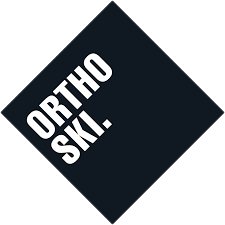How to lower your risk of ski-knee injury
Knees are the skier’s injury of choice, for both recreational and World Cup skiers. Whilst World Cup skiers mostly do an ACL rupture with minimal damage to other tissue around the knee, recreational skiers have way more fun with their knee injuries and are far more likely to rupture their ACL and damage surrounding structures simultaneously – like meniscal cartilage, collateral ligaments and tibial plateau fractures. Party time!
Looking at the mechanism (or movements) involved in causing an ACL rupture, a woman’s natural structural and biomechanical predisposition puts many of them at an unfair disadvantage for suffering one of these types of injuries. And this is reflected in the injury rates for recreational female skier ACL tears being much higher than males.
Over 50% of ACL ruptures are caused by the “slip-catch” mechanism. The movements involved are; the outer leg is twisted in, and the knee is bent inwards, and snap goes the ACL. Ouch.
The other classic ski mechanism of injury is “phantom foot”. The knee is bent well beyond 90 degrees, the skier is almost sitting on their ski, and the foot is internally rotated. In this position, the bindings can’t detect that they need to release, so they stay on, tearing the ACL instead. Clang!
Based on expert opinion, the risk factors for knee injuries are any that put you closer to the mechanisms described above, such as:
Increased Q angle (knock knees) – more common for the ladies
Joint laxity/hypermobility – more common in women, who tend to be more flexy
Proprioception (or neuromuscular control/functional joint stability – do your muscles activate subconsciously to control the joint’s stability?) bad reflexes.
Low quadriceps and hamstring muscle strength – especially eccentric muscle contractions (when you’re decelerating or slowing down)
More recently physios have been discussing the role of gluteal muscle strength (your butt muscles) and their role in knee pain. We love big ski butts.
THIS IS BUMMING ME OUT, WHAT CAN I DO?
Yes, it does sound a bit dreary, but of course there are things to do to try to lower these risk factors. And clearly it is possible to lower these risk factors, because women in the World Cup have equal ACL injury rates to the men. So, hope is not lost. A lot of these start with being fit and doing some skiing-specific strengthening and proprioceptive training. Several neuromuscular training exercises have been evaluated with impressive success. This sounds far trickier than it really is. Go and talk to the peeps at Altitude Physio for some excellent exercises to get you going. Unfortunately, these mostly involve prep before you come skiing. So if you’re reading this pre-season, get yourself to an excellent physio or EP that can identify your weaknesses and help you build yourself up.
If you’re already on the slopes and want to reduce injury risk, get your technique and equipment right. Start by getting your boots aligned correctly to reduce the intrinsic risk factors you’ve been dealt. Get a slightly shorter, slightly narrower and slightly softer ski – these put less strain on the knee. Get a lesson to ensure you’re using optimal ski technique to prevent getting in the tricky-knee situations and don’t ski when you’re too tired - visit the bar for a bevvy instead.

